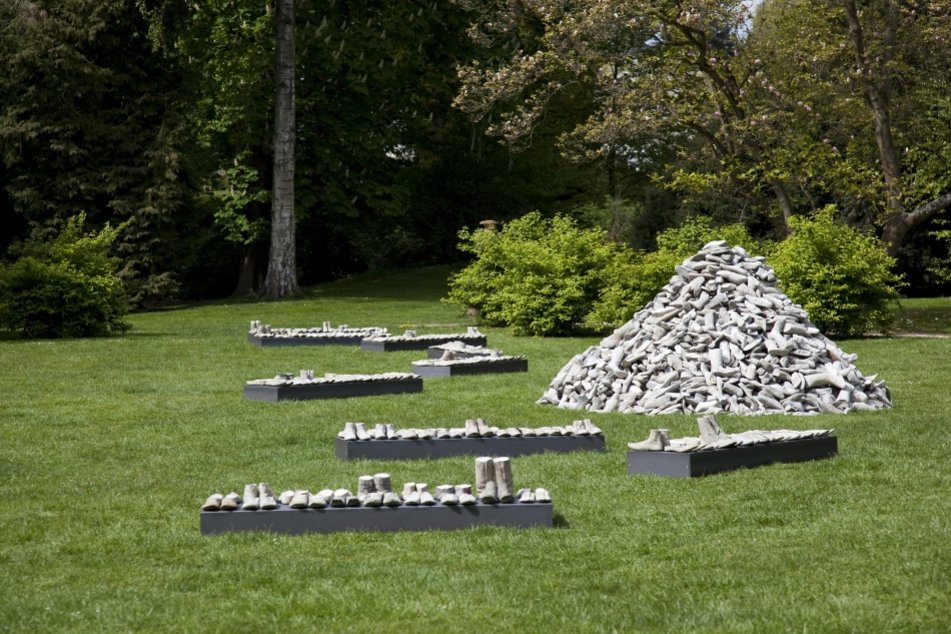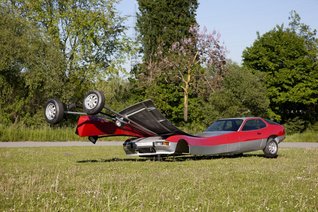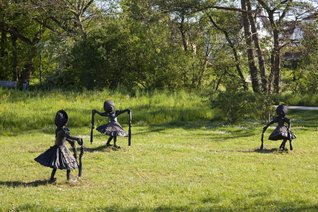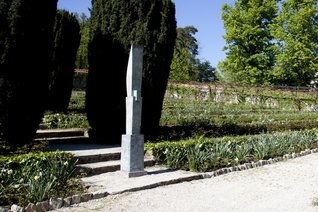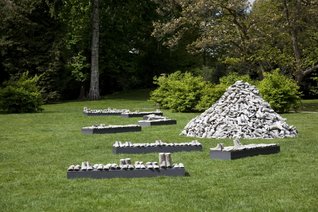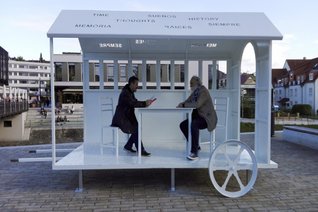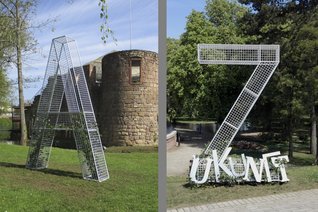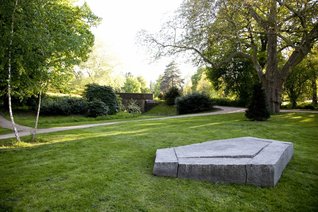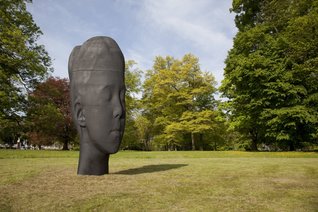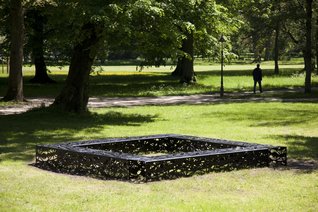Joannis Avramidis
(Austria) *1922 in Batumi, Georgia, †2016 in Vienna
One of the most important exponents of contemporary sculpture is represented in two locations in “Blickachsen 11”: in the Bad Homburg Kurpark, and in the park of the former Schloss Friedrichshof in Kronberg. The artist Joannis Avramidis studied painting and sculpture – among others under Fritz Wotruba, who is also represented twice in “Blickachsen 11” – at the Academy of Fine Arts in Vienna. Throughout his life, Avramidis concerned himself with the human body, whose contours he abstracted, and whose fundamental structures he in a variety of ways sculpturally re-worked. His work “Kreisgruppe” (Circular Group), on display in Bad Homburg, is of cast bronze and shows a large number of figures pressed together to form a compact group. The apparent outlines of their bodies suggests their faces are pointed towards the centre of the group. The block-like form of the sculpture with its figures facing inward underlines the togetherness and unity of the single figures, who appear not as individuals, but rather coalesce into the confraternity of the “Circular Group”. Despite its size, the slender sihouettes of the individual bodies lend the massive bronze a feeling of grace and fragility.
In addition to his work in Bad Homburg, Joannis Avramidis is one of five artists in “Blickachsen 11” whose work can be seen in the new “Blickachsen” location in Kronberg: the park of the former Schloss Friedrichshof, today the Schlosshotel Kronberg. Avramidis was professor at the Academy of Fine Arts in Vienna from 1968 to 1992, and his works are exhibited all over the world. His mainly cast bronze sculptures deal with the human body, rendered in modified, reduced or fragmented forms. His works are characterized by their restrained elegance. Despite their often larger-than-life dimensions, they never seem massive or monumental. Even those works depicting groups of figures display a delicateness and sense of inner privacy. As in Bad Homburg, the individual figures in the “Vierfigurengruppe” (Group of Four Figures) stand almost protectively closely-packed, forming a tightly knit, indivisible unity. The individual figures are only schematically portrayed. Yet the distinctive lines separating the abstracted bodies form a tense contrast to the impression of unity.
